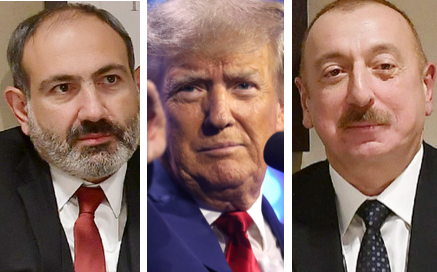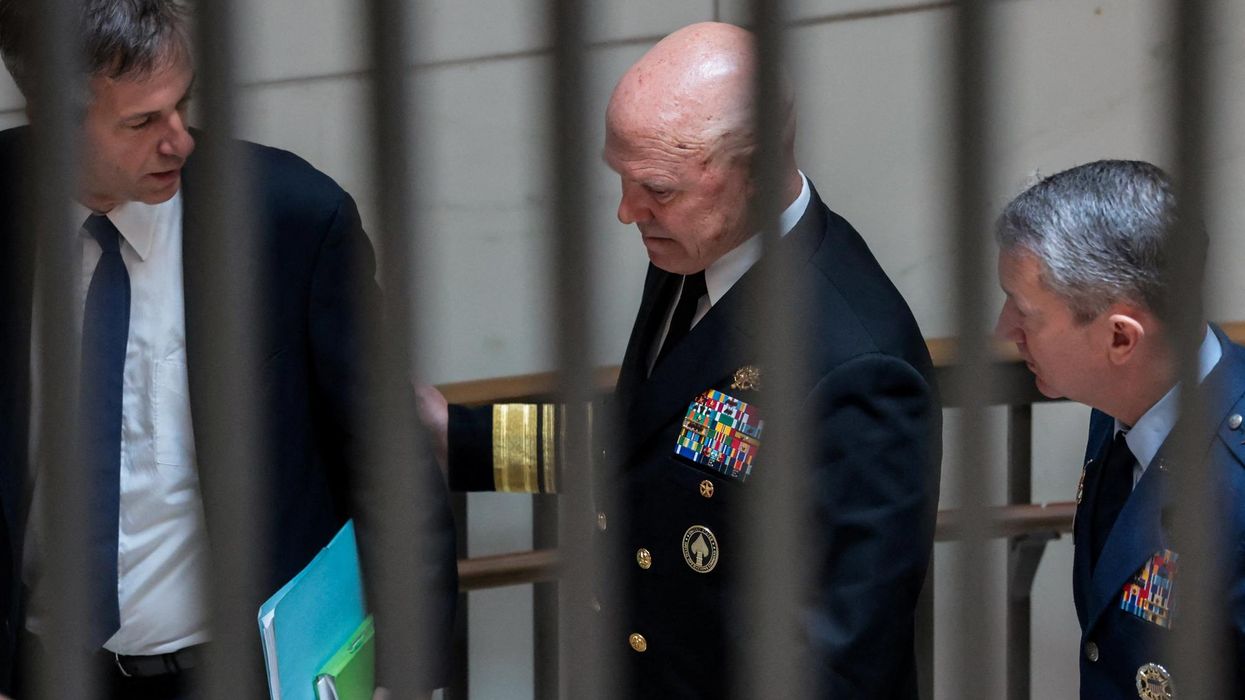U.S. President Donald Trump is hoping the Armenian Prime Minister Nikol Pashinyan and Azerbaijani President Ilham Aliyev are primed for peace when they meet Friday at the White House.
The two are expected to sign a framework agreement while Armenia and the U.S. are expected to launch a joint venture offering exclusive U.S. commercial development rights to a 43-kilometer route through Armenia’s southern Syunik region. This land route will run through Armenian territory to connect mainland Azerbaijan with its Nakhichevan exclave and Turkey and has been a main sticking point in negotiations.
Whether or not this will lead to a more peaceful, stable, and prosperous South Caucasus remains an open question. The region, flanked by Russia, Turkey, and Iran, has proven difficult for Washington to strategically maneuver in the past.
Over the last several years, Armenia and Azerbaijan have been engaged in a negotiation process to resolve their decades-long conflict. That process reached a crescendo of sorts in March when the two sides announced that they had finally worked out the text of a peace agreement, following Armenia’s acceptance of two previously unresolved articles. Nevertheless, Azerbaijan has demanded several preconditions — including changes to Armenia’s constitution — be met before signing the document.How we got here
Azerbaijan emerged victorious, confident, and assertive after reigniting hostilities through a six-week war against the disputed Nagorno-Karabakh region in late 2020. Feeling further emboldened by global developments since then, Baku has frequently pursued a coercive and maximalist agenda toward Armenia.
Complicating matters further, the Armenian government and parts of society have throughout this period become increasingly dissatisfied with Russia, their nominal ally. This crisis in relations was exacerbated as Moscow largely stood idle as Azerbaijan launched subsequent military escalations, both into internationally recognized Armenian territory (some 80 square milesof which is still occupied to this day) and against Nagorno-Karabakh, resulting in the expulsion of over 100,000 ethnic Armenians from the territory in September 2023.
Russia’s early setbacks in Ukraine and its significantly curtailed trade and energy ties with the EU due to sanctions led Moscow to become increasingly reliant on Azerbaijan and Turkey. This reliance translated into an unwillingness or inability to ward off violent pressure tactics against Armenia or to publicly condemn Azerbaijan’s actions, much to Yerevan’s displeasure.
Armenia’s subsequent Western-leaning pivot, however, has provoked strong reactions from some in Russia. The Armenian (and Azerbaijani) move to effectively sideline Russian involvement in the above-mentioned transit route further unsettled relations.
Nevertheless, while Yerevan and Moscow have engaged in combative rhetorical spats, both have remained cautious about taking any steps that would cross red lines in their relationship. Yerevan remains an official member of the CSTO and the EAEU and has only increased its trade with Russia. Moscow has not taken any significant retaliatory steps against the Armenian economy, which is heavily reliant on Russia. Importantly, Russian President Vladimir Putin has been restrained in his comments about Armenia and Pashinyan.
As Yerevan now seeks to pivot away from and reduce its critical reliance on Russia – particularly in energy and trade – there exist few alternatives but to pursue a policy aimed at unlocking its border with Turkey and thus allowing for direct trade relations with Ankara, which shut its border with Armenia in 1993.
In addition, Armenia hopes that an open border with Turkey will allow it additional opportunities to expand its ties with European and other partners.
Holding this back, however, is Ankara’s condition that its normalization process with Yerevan be linked to the signing of a peace agreement between Armenia and Azerbaijan. Baku, in turn, states that the already-finalized agreement will be signed with Yerevan only when its own preconditions are met, chief among them an unhindered transit route to its Nakhichevan exclave. If the deal is sealed, this route would effectively connect Turkey with Azerbaijan and across the Caspian Sea into Central Asia while avoiding passing through Russian and Iranian territory.
Armenia, which has declared its sovereignty and jurisdiction a red line, is now seeking all available means by which to resist continued Azerbaijani pressure. This has resulted in increased Armenian reliance on the U.S., EU and, paradoxically, Turkey for deterrence as Yerevan pursues its “peace agenda.”
Iran-Israel connections
For Iran, which shares a northwestern border with both Armenia and Azerbaijan, any extraterritorial schemes in Armenia’s Syunik region are viewed as a bright red line.
In late July, Ali Akbar Velayati, a senior adviser on international affairs to the Ayatollah, made strongly worded remarks on the subject and America’s potential involvement. “The main goal,” he said, “is to weaken the Resistance Axis, sever Iran’s link with the Caucasus, and impose a land blockade on Iran and Russia in the region’s south.” Velayati added that the “project is not only part of America’s strategy to shift pressures from Ukraine to the Caucasus, but is also supported by NATO and certain pan-Turkist movements.”
Iran’s foreign ministry spokesman, however, recently sounded a more pragmatic tone.
Of particular concern to Iran is Azerbaijan’s deepening relations with Israel.
Significant efforts have been underway in Washington, Tel Aviv, and Baku to bring the Shia-majority country into the Abraham Accords. Donald Trump’s Special Envoy Steve Witkoff made a quiet visit to Baku in mid-March to discuss this topic with the country’s leadership. According to a recent Reuters report, the U.S. views Azerbaijan’s conflict with Armenia as a “key sticking point” given Washington’s view that an agreement should be a “precondition” to joining the Accords.
Across the Muslim world, however, Azerbaijan-Israel relations are already some of the most advanced. Having flown relatively under the radar for many years, Baku’s offensive in 2020 exposed the prevalence of Israeli weaponry in Azerbaijan’s arsenal. The Stockholm International Peace Research Institute recorded that, between 2016-2020, some 70% of Azerbaijan’s major arms imports came from Israel.
In exchange, Azerbaijan provides between 40-60% of Israel’s oil needs, and Baku is looking to expand its energy cooperation with Tel Aviv. It is also widely believed that Israelis conduct intelligence operations from Azerbaijani territory, particularly near its southern border with Iran. Indeed, following the 12-day war in June, Tehran called on Baku to investigate reports of Israeli drones using Azerbaijani airspace, a claim that Baku strongly denies.
While Iran is weakened and preparing for an anticipated future war, and Russia remains fixated on Ukraine, the U.S. and Turkey appear to see a window of opportunity to strengthen their influence and advance their interests in the South Caucasus.
Nevertheless, two questions remain: Will increased American and Turkish involvement in the region exacerbate or calm broader tensions, and what is the staying power of a U.S. commitment in the South Caucasus under the current administration?
What ongoing developments clearly signal, however, is that a reinvigorated struggle for the Caucasus is only starting to heat up.
- Too optimistic? Azerbaijan-Armenia peace deal looms at last ›
- Is Trump's Armenia-Azeri peace plan yet another road to nowhere? ›
- With this devil in the details, Azerbaijan wins | Responsible Statecraft ›
















